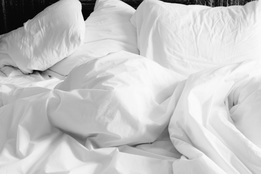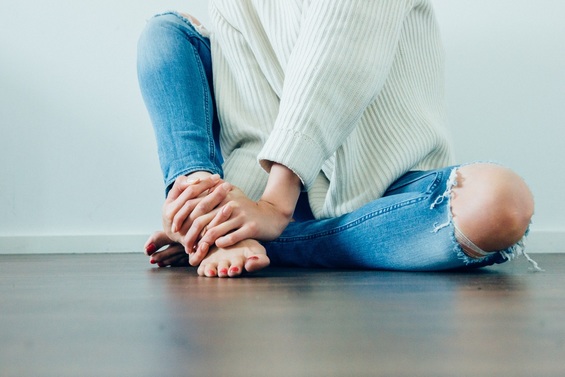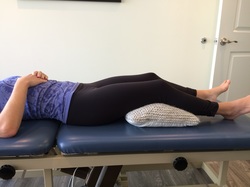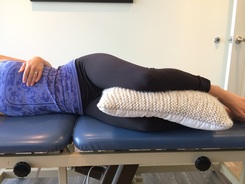|
I was recently teaching a workshop at a local gym when I asked the audience, "Who here has knee pain?" Nearly two-thirds of the crowd raised their hands. While this number may seem alarmingly high, greater than 60% of people report knee pain at some point during their adult life. Generalized knee pain is the 3rd most common reason Americans visit their doctor each year. In the clinic, I find that women are at a greater risk for knee pain than men. Simple postural cues and sleeping adjustments can be made to minimize the stresses placed across the knee each day. Why is knee pain so common?In a previous post, Knee Pain While Trail Running, I discussed why the knees are susceptible to injury. "The knee has motion in a single plane limiting the ability to absorb abnormal stresses from multiple angles. Since the knee only moves in one plane, the position of the hip and ankle have a profound effect on the forces that meet at the knee. ...When we don’t attend to the demands on the hip and ankle, the detriments often appear in the knee. If motion is lacking above or below the knee, the abnormal forces dispersed on the inherently unstable knee will result in pain." How to Adjust Sleeping Habits In general, women have wider hips than men. Wider hips increase the angle from the hips to the knees (this is known as the Q-angle). A large Q-angle predisposes the knees to collapse inward, which creates muscle imbalances across the knee joint. For this reason, clicking and popping can occur at the kneecap. The clicking and popping is not harmful, but it is sign that something is not moving properly. Whenever these signs appear, it is important to look at one's prolonged postures (i.e. sitting, driving, and/or sleeping) to find the cause. Since most people sleep between 6-8 hours each evening, let's start there! As simple sleeping adjustment to perform each evening is to place a pillow either between the knees or underneath the back of the knee. For side sleepers, the pillow between the knees will stop the top knee from collapsing in on the bottom one. The pillow decreases the Q-angle and minimizes the prolonged stress placed on the outer hip muscles while sleeping. For back sleepers, the pillow underneath the knees will stop the them from overextending and collapsing inward. Additionally, it will place the hip joint in a relaxed position, which protects the low back and knee joints. Remember, these sleeping adjustments are only as beneficial as your exercise and postural habits throughout the day. It is important to incorporate gluteal and hip strengthening exercises (see below) to keep the hips and core strong. Two Scientifically-based Exercises for Knee Pain
Are you experiencing knee or low back pain?Contact Heafner Health today to see if you are appropriate for physical therapy
P: 618-604-3293; E: [email protected]
10 Comments
I often get asked the question, “What is the best posture?” The answer is not what people expect nor what they want to hear. People expect me to say proper posture is when the spine is lengthened, the core is engaged, the hips are neutral, the knees slightly bent, and shoulders resting back. While this is a great static posture, there is nothing functional about this position. The best posture is one that requires regular movementThink about posture as a state of constant change that is always evolving and adapting to the demands of life. The best posture is a dynamic one that stimulates the brain and stresses the body in unique ways. Our body is designed to explore the capacity of our movement throughout our entire lives. We need to be stable in certain positions and quick and agile in others. Injuries are more common in older people simply because we lose our dynamic posture. Think about the last time grandma or grandpa performed a jumping movement. It simply does not happen. Be Dynamic! |
Heafner HealthPhysical Therapy Archives
April 2024
Categories |





 RSS Feed
RSS Feed
